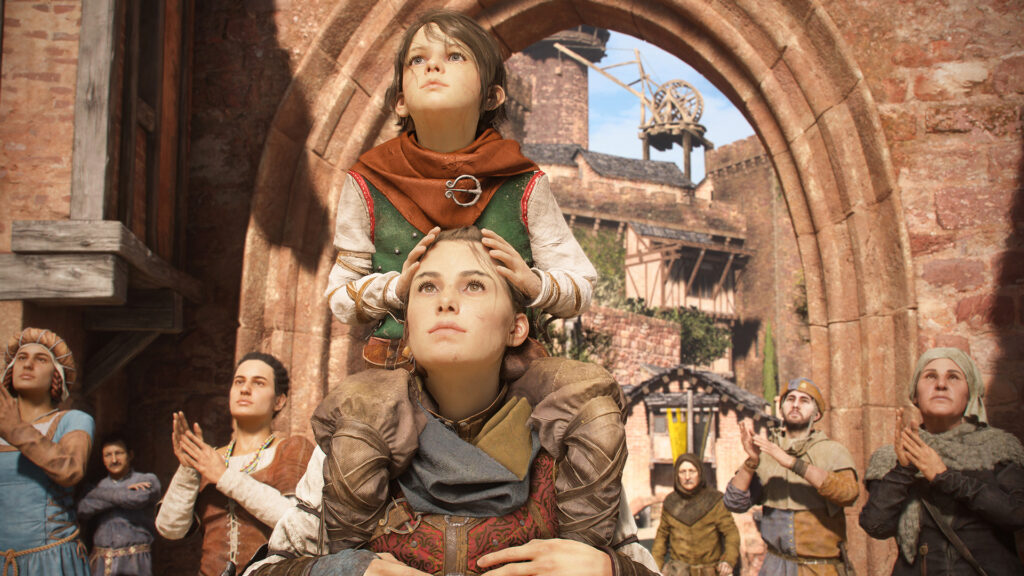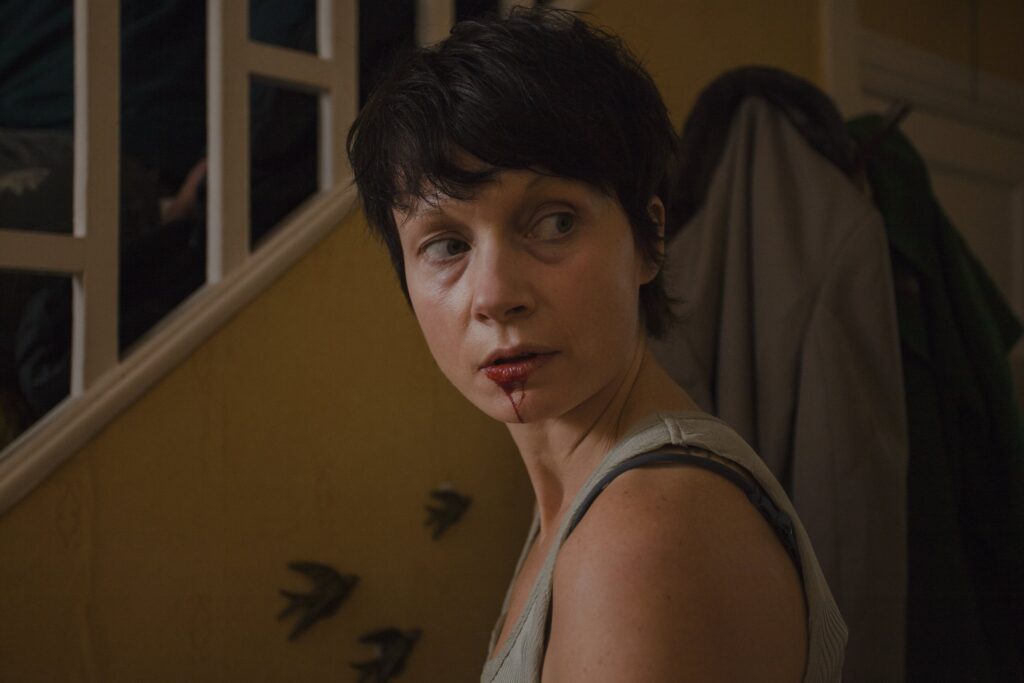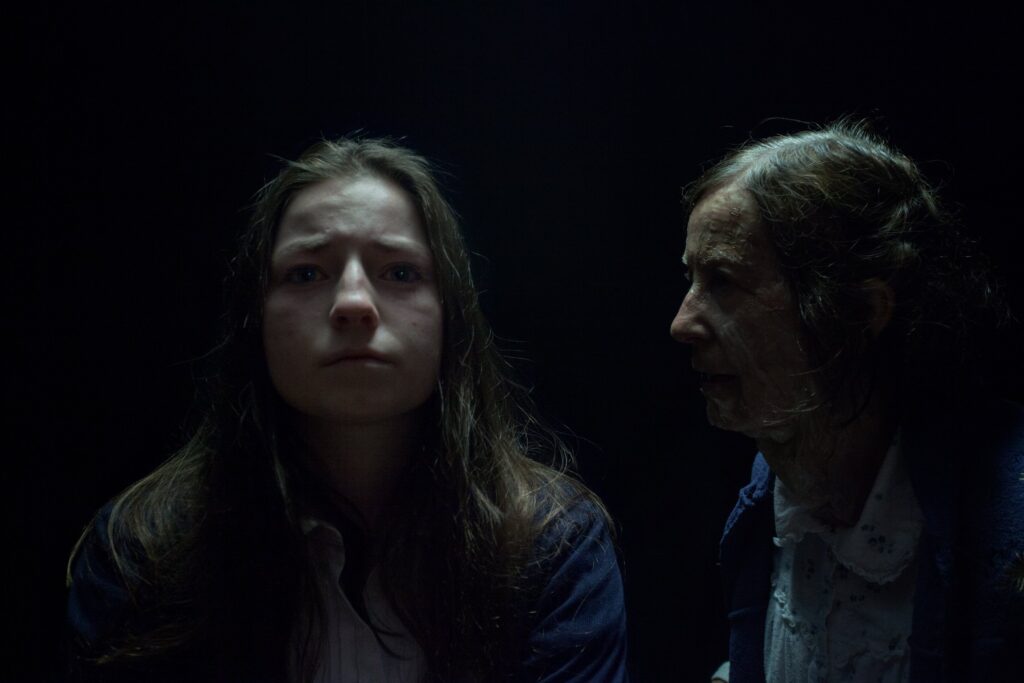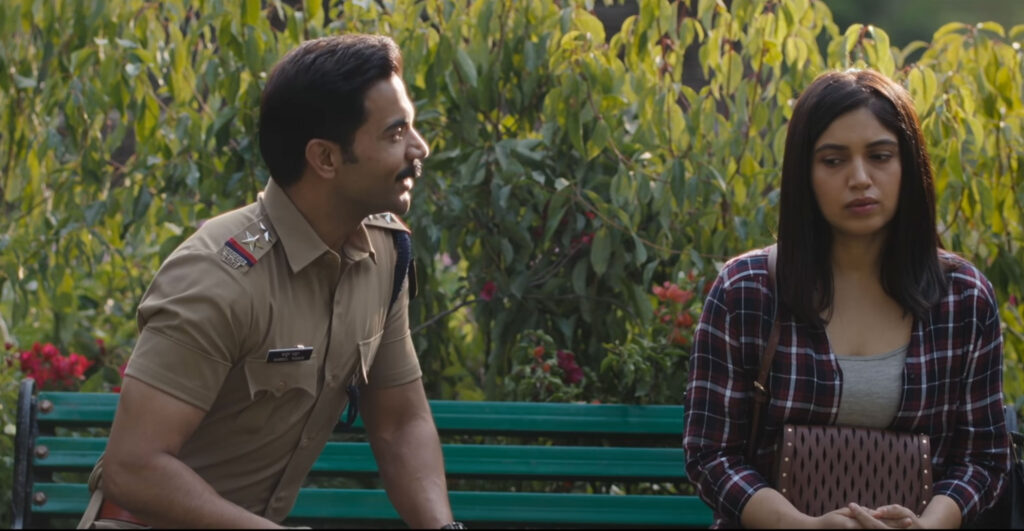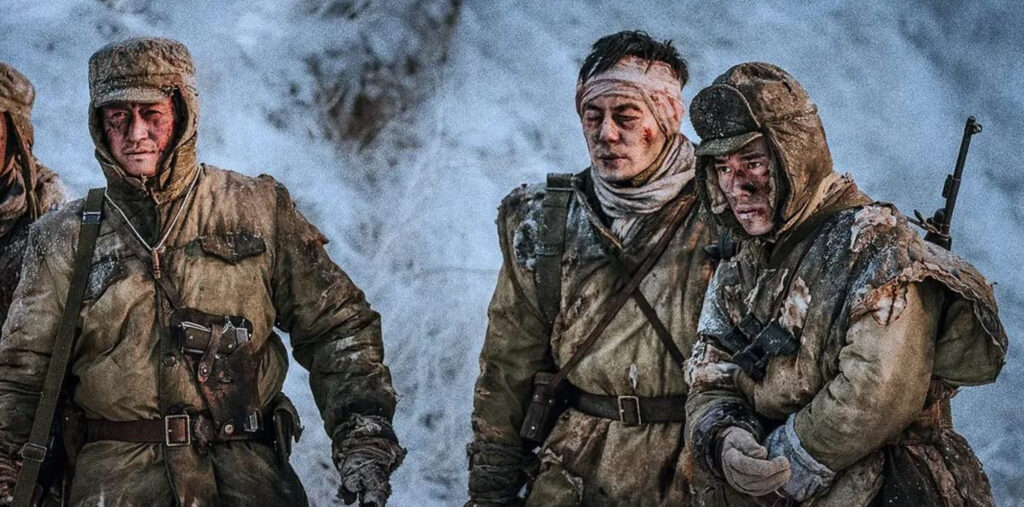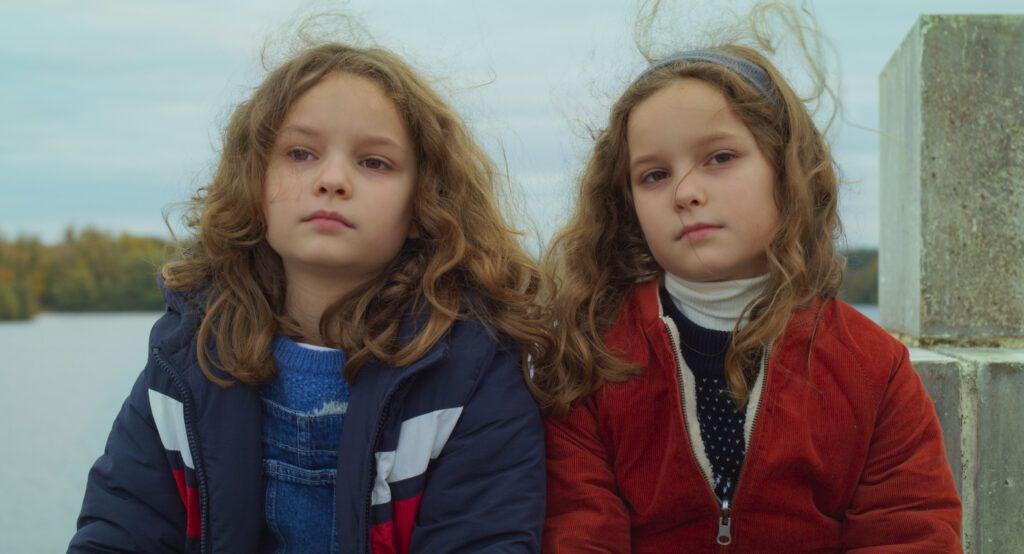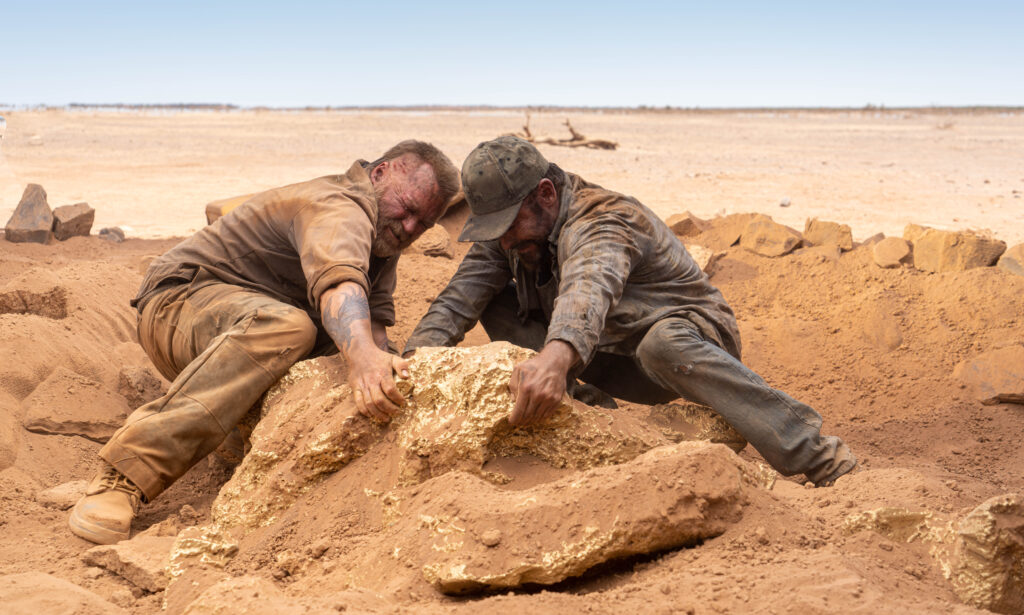April 26, 2022
by Carla Hay
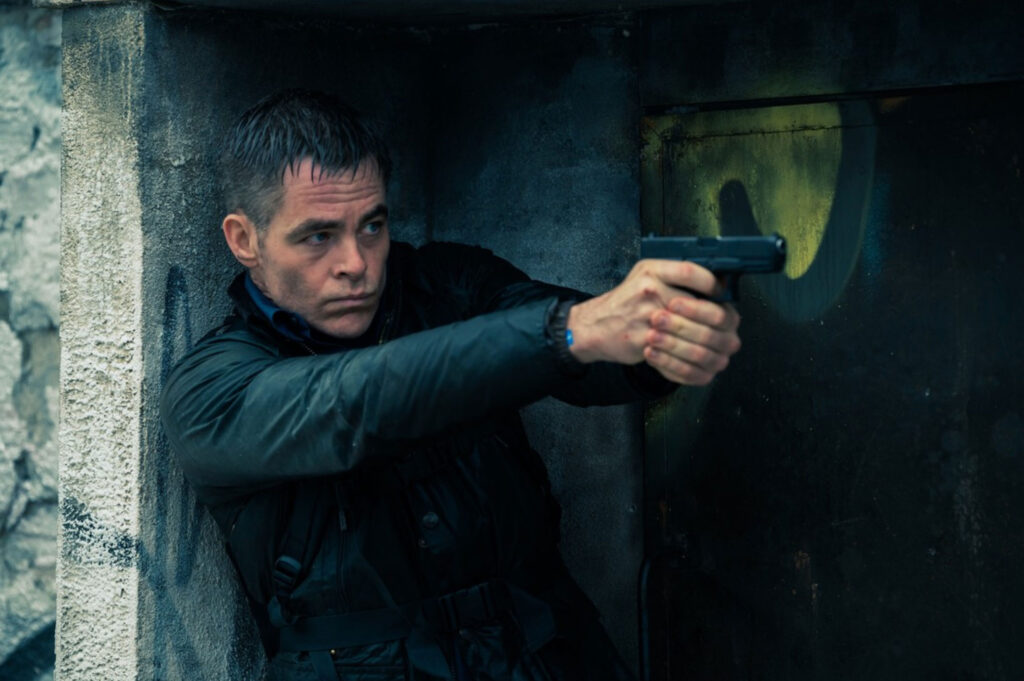
Directed by Tarik Saleh
Culture Representation: Taking place in the United States and in Berlin, the action film “The Contractor” features a cast of predominantly white characters (with some African Americans) representing the working-class and middle-class.
Culture Clash: A former Green Beret takes a mercenary job as a private contractor, and he finds himself at going against orders and being hunted by his former colleagues.
Culture Audience: “The Contractor” will appeal primarily to people who are fans of star Chris Pine and anyone who likes formulaic “shoot ’em up” movies.

“The Contractor” is as generic and dull as its title, with an over-used action-movie plot of a bitter military veteran who goes rogue. Throw in some ‘daddy issues,’ sloppy editing and a drab Chris Pine—and that sums up this soulless film. It’s also got an awkward mix of trying to be gritty and sentimental, often in the wrong places.
Directed by Tarik Saleh and written by J.P. Davis, “The Contractor” (formerly titled “Violence of Action”) is being marketed as an action thriller, but any “action” or “thrills” are utterly predictable and don’t really come until the last half of the movie. The first half of the movie is a dreary slog showing what led to James Harper (played by Pine) going from being a Green Beret to joining a shady mercenary operation as a private contractor. James is living in the shadow of his father Mason, a high-ranking U.S. military officer who expected James from an early age to also go into the military.
In the beginning of “The Contractor,” James has been estranged from his father for years, for reasons that remain vague. However, flashbacks and conversations reveal that Mason (played by Dean Ashton) was an overly demanding and emotionally abusive father during James’ childhood. The movie starts off with James as a U.S. Army Special Forces Sergeant first class, also known as a Green Beret. James is also a war veteran, and he sustained injuries during his war duties. James is currently stationed in Fort Bragg, North Carolina.
Now seemingly recovered from his injuries, James is due to go before a board of military decision makers who will determine if he will be reinstated as a Green Beret. However, James has a secret: Because he’s desperate to be in the type of physical shape where he can be re-instated, James has been illegally taking human growth hormones through needle injections.
The U.S. Army finds out when James tests positive for these drugs. He is honorably discharged, but as punishment, he won’t be getting his military pension or insurance benefits. It comes at a very bad time, because James and his homemaker wife Brianne (played by Gillian Jacobs) are heavily in debt and getting dangerously close to going bankrupt. They’re so financially broke, they’re behind on their utility bills. When debt collectors call, James just ignores the phone calls.
In addition to having a financial strain on their marriage, James and Brianne have grown emotionally distant from each other. Brianne and James have a shy and introverted son named Jack (played by Sander Thomas), who is about 8 or 9 years old and the couple’s only child. Because James has spent a long time away from home, Jack is bashful around James, but James wants to be a loving and attentive father, so he makes an effort to get closer to his son, by doing things such as teaching Jack to swim in a public pool.
Not long after getting the bad news about his military discharge, James finds out that his father has died. This death seems to trigger some strange behavior in James, in obvious indications that he has unresolved issues with his father. For example, Brianne finds James doing repairs on their house’s roof in the middle of the night. When Brianne wants an explanation, James says defensively to her: “I’m not my father.”
And in cliché-ridden tripe such as “The Contractor,” that means you’re going to see some hazy-looking flashback scenes of James as child of about 10 or 11 years old (played by Toby Dixon) and James’ father Mason, who was a stereotypical stern and macho military type. As seen in flashbacks, Mason was the type of father who expected James to be tough from a very early age. He even forced a pre-teen Mason to get a tattoo at a tattoo parlor, even though it’s illegal for tattoo parlors to give tattoos to people under the age of 18.
At his father’s funeral, James reconnects with his former military best friend Mike (played by Ben Foster), who is happily married to a woman named Christine (played by Tyner Rushing), who likes and respects James too. Mike and Christine have two children: Mike Jr. (played by Nicolas Noblitt), who’s about 10 or 11 years old, and Kelly (played by Eva Ursescu), who’s about 12 or 13 years old. When James goes to Mike’s house for dinner, Brianne is not with him, which is another indication of the cracks in their marriage.
During this visit at Mike’s house, James confides in Mike about his financial problems. Mike tells James that if James is interested in private contractor work, Mike can easily help James get a contractor job that pays $350,000. It’s an offer that’s too tempting to refuse, and James desperately needs the money, so he says yes. This “private contractor” work is really mercenary-for-hire work, usually done by ex-military people, for secretive employers who want to keep these “black ops” jobs as confidential as possible.
Brianne isn’t too pleased about this decision, especially since James promised her that he would never do this type of work. James has already made up his mind though, and there’s nothing Brianne can do to stop him. James’ family life then gets mostly sidelined, as the rest of the movie is about his private contractor job.
James’ supervisor in this job is a rough and jaded character named Rusty (played by Kiefer Sutherland), who says that James will get $50,000 up front as payment, and the remaining $300,000 after the job is completed. To launder his money, Rusty owns a company that imports and exports coffee.
Rusty knows that James is taking this job because James was essentially ousted from the U.S. military. Rusty tells James: “I was you. That’s why we started our own tribe.” Rusty also warns James about the ruthless mercenaries he will encounter in the job. “The stink of those guys, they will rub off on you.”
It’s an assignment that will take James, Mike and some other people on this black-ops team to Berlin. The other members of the team include a cunning operative named Katia (played by Nina Hoss) and a muscle-bound brute named Kauffman (played by Florian Munteanu). Later, James meets a mysterious recluse named Virgil (played by Eddie Marsan), who might or might not be helpful to James.
In Berlin, this black-ops group has been tasked with hunting down a 42-year-old man named Salim Mohsin (played by Fares Fares), a retired professor of virology who used to work at Humboldt University in Berlin. Salim is doing privately funded research, and he’s suspected of being involved in bioterrorism, because he is developing a poisonous gas that could be used as a weapon of mass destruction.
Salim’s research is being funded by Farak Ojjeh, the founder of El Sawa, a charity with known links to Al Qaeda in Syria. Salim and his wife Sophie (played by Amira Casar) have a 9-year-old son named Olivier (played by Tudor Velio) and a 7-year-old son named Yanis (played by Aristou Meehan). And predictably, this family will be caught up in some way in whatever dirty dealings happen in the movie.
Things happen during this mission that don’t sit right with James, so he decides to not follow orders. It leads to James and Mike going on the run from their colleagues, with double-crossings and shootouts in the mix. The action scenes aren’t impressive. And too much of the action has clunky editing, thereby making some of the chase scenes look very phony.
It all just leads to a very formulaic conclusion, where the people who die and those who survive are too easy to predict. All of the cast members just seem to be going through the motions in the action scenes. The only attempt at some emotional depth is in the underdeveloped family scenes near the beginning of the film.
“The Contractor” has all the cinematic resonance of a mediocre video game. That might be enough to entertain some viewers watching a movie with talented cast members who deserve better material. Everyone else can skip “The Contractor,” because they won’t be missing out on anything meaningful.
Paramount Pictures released “The Contractor” in select U.S. cinemas, on digital and VOD on April 1, 2022. The movie is set for release on 4K Ultra HD, Blu-ray and DVD on June 7, 2022.


